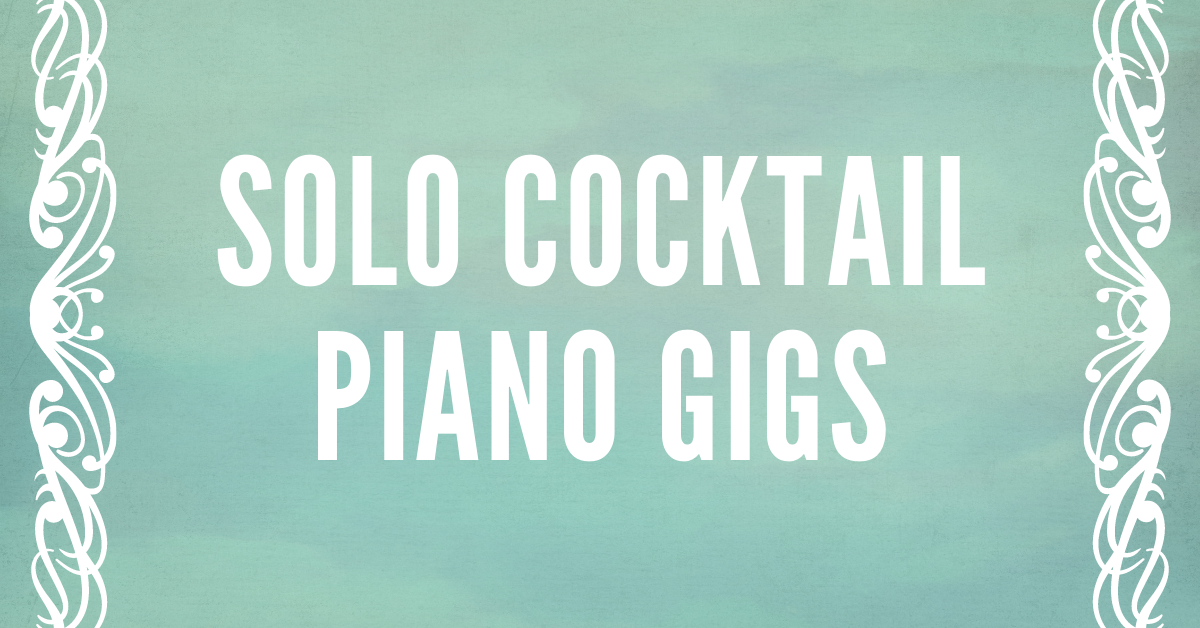Solo Cocktail Piano Gigs

In this article we'll answer a bunch of question regarding solo cocktail piano gigs. Ever wonder what kind of material you need to know in order to be ready to play cocktail piano gigs? Or how about how many songs you need to know before you can consider yourself ready? Or perhaps whether you possess the necessary level of ability required for such a gig? We'll answer all those questions - and more - here!
Solo Cocktail Piano Gigs: Repertoire
In general, pianists should have about 1 hour of material that they can play competently before being ready for a solo piano gig. That's probably between 10-15 tunes, and it's best if they're memorized. There is no master song list that you need to know but there are some really popular tunes in this idiom.
Here's a Top 10 list of tunes that you can use as a reference to get you started:
- Fly Me To the Moon
- All The Things You Are
- Body and Soul
- Over the Rainbow
- The Days of Wine and Roses
- Blue Bossa
- Autumn Leaves
- In a Sentimental Mood
- Misty
- On Greem Dolphin Street
Solo Cocktail Piano Gigs: Preparation and Practice
Say you're learning "Fly Me to The Moon." The first step is to find a bunch of various recordings of the tune and listen to them over and over, memorizing the form, the tempo, the meter, the melody, and maybe even the harmony (if your ears are that developed). This can all be done away from the piano, so it's usually a lot of fun.
Memorizing the melody is key because it's the aspect of your performance with which the listener most closely identifies. Here's a little tip for memorizing the melody: after listening to it repeatedly, practice learning it by ear and playing it with two hands simultaneously. This is a great practice exercise for pianists. Play along with recordings, with your metronome, and take rhythmic liberties. As much as possible, try not to use the sheet music.
Once you're set with the melody, add basic chord shells in your left hand. Keep it simple - use voicings such as root, 3rd, 7th or root, 5th, 7th. Adding things like tritone substitutions is great, but it's not essential. Knowing the original song is sometimes all you need.
Learning 10-15 tunes in this manner doesn't take that long. And that's usually enough to consider yourself ready for solo cocktail piano gigs in places like restaurants, hotels, bars, or cocktail hour receptions.
Solo Cocktail Piano Gigs: Playing and Keeping the Gig
How to get the gig? It might seem obvious but - ask. Approach restaurant, bar, and hotel managers and ask if you can play. Make sure you understand the landscape - is a piano provided or will you need gear? Have a price in mind that makes it very easy for the person doing the hiring to say "yes" (you can always ask for a raise later once you've proven yourself competent). Be punctual, respond to emails and phone calls promptly, and always be friendly and polite. When on the gig dress as though you're a pro (look sharp). Have a program in mind - playing for senior citizens at a nursing home usually means you want some old school jazz standards in your repertoire. Playing a bar means you'll probably want to have a Billie Joel tune or two at the ready. The little secret is that most event managers aren't musicians. They want to work with someone who is competent and friendly. As long as you prepare yourself and act professionally, you'll likely get called back.

